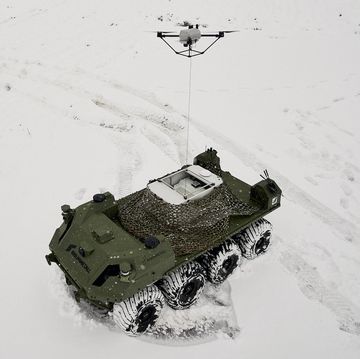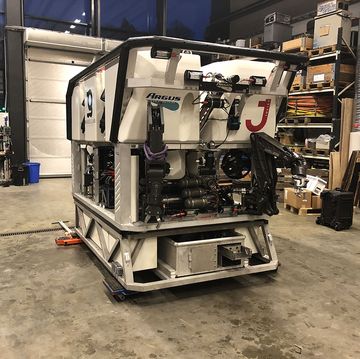As more robots find near-permanent homes on land and in space, they are also starting to settle in for long-term living in the ocean.
SOLO-TREC, the latest breed of autonomous underwater vehicles (AUV), features an engine that produces renewable energy from water temperature fluctuations, allowing it to spend more time in the water.
The new technology, developed by scientists from NASA's Jet Propulsion Laboratory and the Scripps Institution of Oceanography at UC-San Diego, offers a major improvement in powering AUVs. Most of these robots can hold a greater charge than SOLO-TREC (which stands for Sounding Oceanographic Lagrangrian Observer Thermal RECharging), but they need to be plugged in on a boat or docking station. NASA scientist and SOLO-TREC principal investigator Yi Chao explains that by giving AUVs a "plug in the water," researchers can let their bots collect more data without having to retrieve them frequently.
SOLO-TREC relies on an engine that uses phase-change materials, waxy substances that expand and contract when exposed to different temperatures. This expansion and contraction pressurizes oil stored inside the engine, which in turn generates electricity to recharge the batteries on-board.
Despite this advantage, SOLO-TREC's low overall charge limits its range of motion and its capacity to power a wider variety of research tools. SOLO-TREC is currently only used for passive chemical and temperature testing. Other AUVs, such as Fetch1, developed by marine scientist Mark Patterson at the Virginia Institute of Marine Science, can power propellers and more advanced sensors, such as advanced imaging and video devices.
With their various research capabilities, AUVs have grown in popularity among scientists. "They can be programmed to do dull, dirty and dangerous [work]—anything humans don't want to do themselves," says Patterson, who recently led Fetch1 on an expedition for the National Oceanic and Atmospheric Administration to investigate sediment build-up off the shore of the Caribbean island of Bonaire.
Depending on the tools aboard the vessel, AUVs seem to have the three Ds covered. The bots can take readings of ocean temperature and chemistry, monitor behavioral patterns of marine life and make seismic readings to locate oil and gas deposits; they are also used by the Navy for surveillance and intelligence-gathering to improve homeland security.
As scientists develop new technologies, their AUVs can specialize in different tasks. Here are the specs on two well-known AUV models.
SOLO-TREC
Length: 6.5 feet
Weight: 183 pounds
Maximum depth: 1640 feet
Power source: Rechargeable batteries, charged inside the vessel via thermal recharging engine
Battery life: 8 hours per charge
Range of motion: Moves vertically in the water; no propeller for horizontal movement
Features: GPS, satellite 2-way communication, CTD (Conductivity, Temperature, Depth) sensor
Applications: measures water quality (pH, dissolved oxygen, chlorophyll) and temperature
Fetch1
Length: 6.5 feet
Weight: 220 pounds
Maximum diving depth: 500 feet
Power source: Rechargeable batteries, charged on boat or docking station
Battery life: 18 hours per charge (at 3 knots)
Range of motion: Can move vertically; propeller enables forward motion
Features: GPS, Wi-Fi, microwave RF modem, CTD sensor, altimeter, side scan sonar, video camera
Applications: Capture video of ocean floor, 2D imaging of animals and plants, measures water quality and temperature













